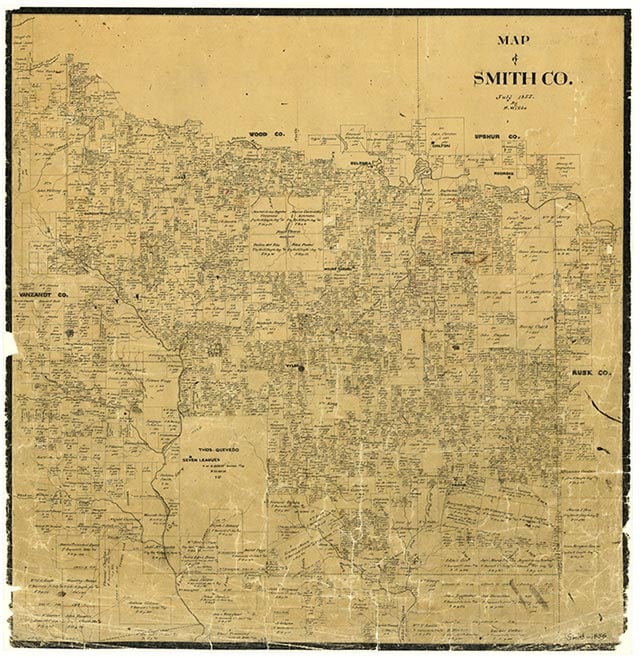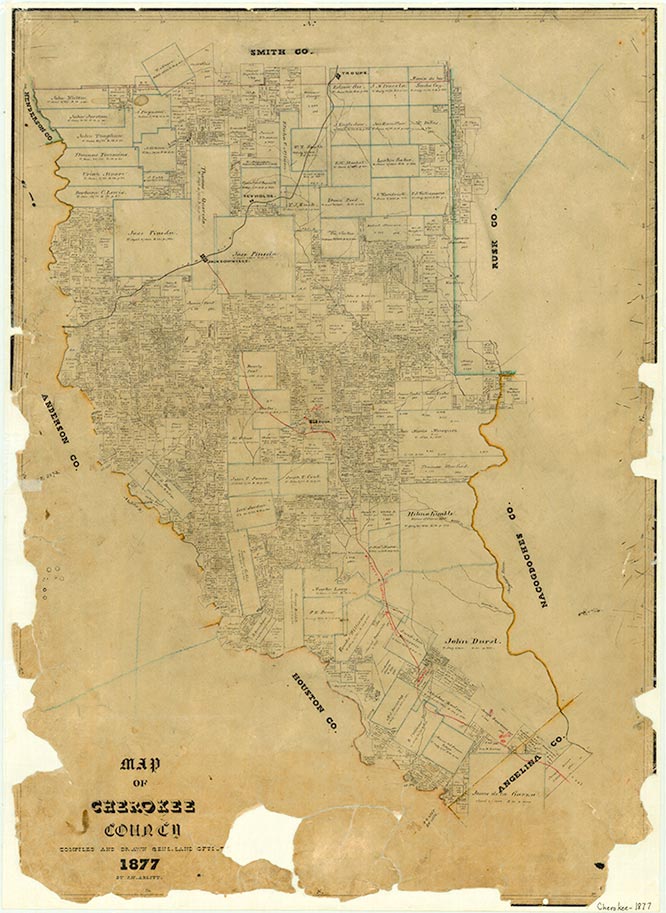Troup
Troup, also known as Troupe, Troup City, and Zavala, is a small town at the intersection of Farm roads 13, 15, 346, and 347 and State highways 110 and 135, three miles south of Arp in extreme southeastern Smith County. The area, originally part of the Eason Gee survey, was settled as early as 1848 by Southerners, predominantly Virginians. A community did not develop there, however, until the railroad boom of the 1870s. Early in that decade the Houston and Great Northern built a line that passed through the area, and soon thereafter Dr. E. M. Hanna established the first hotel at the townsite. In 1872 the town was platted at the point where the line split; the branch went to Tyler, and the main line, to Longview. On January 8, 1873, a post office called Zavala opened at the community, with John R. Thomas as postmaster; within five days the first town lot was purchased. Also that year, Rev. W. W. Brimm came from Tyler to preach the first sermon, and in September a temporary structure was completed to house the eight-member Presbyterian congregation. In 1875 the Zavala City Cemetery was established on land donated by the railroad company, which in 1876 also deeded a new building site to the Presbyterian trustees. But the fellowship continued to meet in the original building, which they shared with Dixie Lodge No. 272.
In 1877 the name of the post office was changed to Troup, and by 1892 the town had 600 residents, eight general stores, four churches, and various millinery shops, saloons, physicians' offices, and drugstores; at that time it also had the hotel, a district school, a meat market, and a cotton gin and gristmill. The municipal government included a city commissioner, a justice of the peace, and a constable. By 1902 Troup had 1,200 citizens, and M. M. Dupre was superintendent of the school. The Presbyterian congregation moved into a new church in 1909. By 1914 Troup still reported 1,200 residents; at that time it also had a bank, a telephone exchange, two cotton gins, various restaurants, and a weekly newspaper. Its population reached 1,800 by the end of the 1920s. During the 1930s the local oil boom helped the community; the productivity of the East Texas oilfield made Troup an important rail town. In 1936 the community had two schools, one with twenty-three teachers for 527 White students, and the other with four teachers for 262 Black students. At that time the town had some seventy-five businesses. The population peaked at 3,000 in 1939, but after World War II it was reported as 1,526. By 1948 Troup had become a significant shipping point for fruits and vegetables and the second-largest town in Smith County. The city government included a mayor and five aldermen. By 1952 the New Hope, Salem, and Prairie Lee schools had been consolidated into the Troup Independent School District. There were sixty-eight businesses in Troup in 1961, and four years later the population was 1,667. In 1981 Troup had fifty-eight businesses and a population of 1,911, making it the third-largest town in the county. Troup in 1990 was an incorporated town with seventy-six businesses and 1,647 residents. In 2000 the population was 1,949.
Vista K. McCroskey | © TSHA

Adapted from the official Handbook of Texas, a state encyclopedia developed by Texas State Historical Association (TSHA). It is an authoritative source of trusted historical records.

- ✅ Adoption Status:
- This place is available for adoption! Available for adoption!
- Adopted by:
- Your name goes here
- Dedication Message:
- Your message goes here
Belongs to
Troup is part of or belongs to the following places:
Currently Exists
Yes
Place type
Troup is classified as a Town
Associated Names
- [2]
- [-City]
- [Troupe]
- (Zavala)
Location
Latitude: 32.14480420Longitude: -95.12238500
Has Post Office
Yes
Is Incorporated
Yes
Population Count, 2021 View more »
2,039



